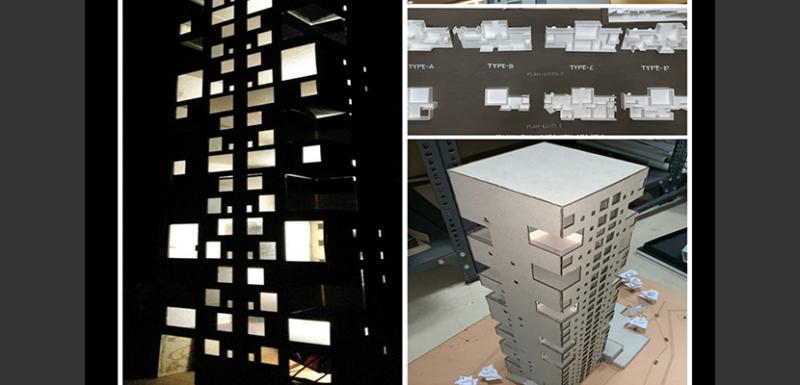
Shaping the Future of Architecture Design in 2024
The history of architecture has been an expression of society, and has always responded to technological, cultural changes in the environment and cultural. As we advance into the 21st century the field of architecture is experiencing significant changes, fueled by advances in technology as well as sustainability issues, and changing societal demands. In this post we'll look at the fascinating innovations which are transforming the future of design for architecture, from the most cutting-edge technologies to sustainable practices, and cutting-edge design concepts.
Embracing Sustainable Design:
One of the biggest modern trends in architecture is the increasing emphasis on sustainability. With increasing concerns over climate changes and the depletion of sources of energy, architecture firms are now embracing sustainable design methods. Green structures, powered with renewable energy sources are now the commonplace. The use of energy-efficient technologies like intelligent lighting and the latest methods of insulation, is helping to reduce the carbon footprint and energy consumption. Additionally architects are adding natural ventilation and green spaces into their designs, creating an environmentally sustainable and healthier built environments.
Technologies for Advancement:
Technology is changing the way architecture is designed and design, allowing architects to create structures that were previously thought impossible. Building Information Modelling (BIM) has become a vital tool for collaboration, and simplifying designing processes. Virtual Reality (VR) and Augmented Reality (AR) are providing architects and clients with the ability to visualise designs in immersive environments, which improves communication and making decisions. Additionally parametric design tools as well as 3-D printing have pushed the limits of architectural design, creating elaborate and customized structures that were not possible before.
Regenerative and adaptive Design:
In our quest for sustainability, the idea of adaptive reuse has become more prominent in the world of architecture. Instead of tearing down older structures architects are creating new structures and repurposing them. The process of adaptive reuse not only protects historical heritage, but also reduces consumption and preserves resources. Through blending the old with the modern architects create spaces that are infused with historical past while also meeting the demands of modern times. Furthermore Regenerative design principles are in use to ensure that buildings contribute more than they consume by utilizing sustainable materials and creating green energy.
Resilient and disaster proof Design:
Due to the increased number of natural disasters, and the danger of climate change, architects are focused on building structures that are able to withstand extreme weather conditions. Buildings that are flood-resistant, earthquake-resistant and hurricane-proof structures are being created, using new materials and techniques. Designers are incorporating features such as eco-friendly roofs, modular structures as well as passive cooling and heating systems, to ensure that buildings are able to adapt and stand up to the test of environmental threats.
Socially Engaged, Inclusive and Design:
Architecture has a huge impact on society and designers are beginning to recognize the importance of creating environments that are inclusive and enhance health and well-being. The architects are focusing on universal design principles and ensuring accessibility to people of any ability. Moreover the idea of placemaking is growing in popularity in which architects work with local communities in the design of spaces that reflect their distinct personal identities and promote an identity of belonging. Community spaces that are inclusive such as community centers, parks as well as mixed-use developments are being developed to encourage interactions between people and improve the living conditions.
Conclusion:
Architecture's future is an evolving landscape driven by the pursuit of sustainability, innovation and social accountability. As technology continues to advance and our understanding of the impact of climate change increases, architects play an important role in creating an improved world. By adopting green practices, taking advantage of technological advances, and focusing on the inclusion of all people, architects are designing structures that are not just visually stunning, but also adaptable for the requirements of future and present generations. Every day, the limits of what's possible in architecture are growing and predicting a future with inspiring, sustainable and valuable places.


Comments (4)
Eva Rodriguez
Vivamus laoreet. Nullam tincidunt adipiscing enim. Phasellus tempus. Proin viverra, ligula sit amet ultrices semper, ligula arcu tristique sapien, a accumsan nisi mauris ac eros.
Dominic Parker
Donec orci lectus, aliquam ut, faucibus non, euismod id, nulla. Curabitur blandit mollis lacus. Nam adipiscing. Vestibulum eu odio. Vivamus laoreet. Nullam tincidunt adipiscing enim. Phasellus tempus.
Eva Rodriguez
Nam adipiscing. Vestibulum eu odio. Vivamus laoreet. Nullam tincidunt adipiscing enim. Phasellus tempus.
Jonathan Bell
Donec orci lectus, aliquam ut, faucibus non, euismod id, nulla. Curabitur blandit mollis lacus. Nam adipiscing. Vestibulum eu odio. Vivamus laoreet. Nullam tincidunt adipiscing enim. Phasellus tempus. Proin viverra, ligula sit amet ultrices semper.